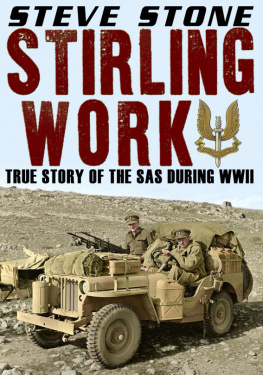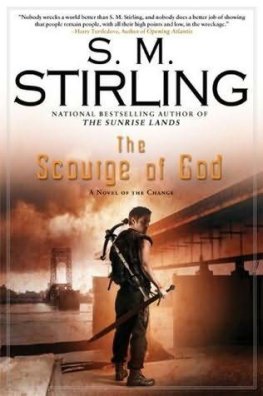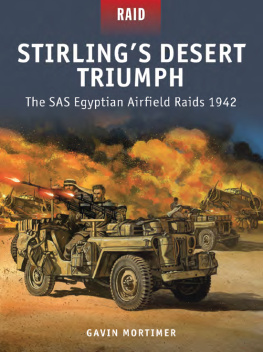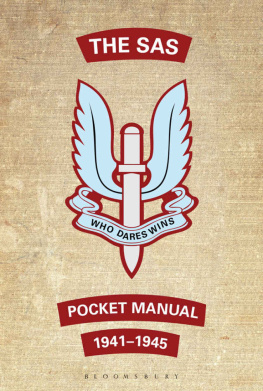STIRLING WORK
The Story of the SAS in WWII
STEVE STONE
Steve Stone 2014
Steve Stone has asserted his rights under theCopyright, Design and Patents Act, 1988, to be identified as theauthor of this work. All rights reserved. No part of thispublication may be reproduced in any form or by any meanselectrical, mechanical, including photocopying, recording or anyinformation storage without permission in writing from theauthor.
Published by Digital Dream Publishing2014

Introduction
What the SAS (Special Air Service) did duringWorld War Two was to revolutionise the way wars could be fought,and in many ways, became the blueprint that would be later used bySpecial Forces across the globe. Delta Force inthe late 1960s based themselves on the SAS and theirdoctrine. What was learnt in those early years of the SAS,proved invaluable for setting up techniques and tactics that arestill relevant today. The SAS were true pioneers and made a smallyet significant impact during the war. David Stirlings thoughtsw as to throw out standard militarytactics the SAS was trained to use improvisation rather thanfollow set military doctrine. This improvisation and adjusting oftactics depending on the objective was at the heart of the SASsuccesses during the war. They would make do with the kit they had,even borrow or steal kit, even from the enemy to accomplish amission or objective. This is where the true motto of Who DaresWins can trace its roots back to.
Even after David Stirling was captured as aprisoner of war, the SAS continued to grow under new leadership,adapting and growing. Until being disbanded after the end of WorldWar II. Only to reconstitute as 21 SAS a Territorial Army unitbefore becoming a regular unit in the form of 22 SAS based atHereford. Without David Stirling and the SAS, we would have neverhave had Bravo Two Zero, Libyan Embassy hostage rescue andcountless other SAS operations. All these men are trained to be thebest of the best, suffer unimaginable hardship, operating deepbehind enemy lines. Whilst the enemy, maybe different, the tacticsand types of missions, are not too dissimilar to the onesundertaken by the SAS in World War II. High technology is still noreplacement for boots on the ground, which can react and gatherintelligence, in ways that technology still cannot. Highly trainedsoldiers such as the SAS can help reduce the need for larger scalewar and military deployment, by their ability to be used as asurgical tool.
The SAS Originals in the early days had anuphill battle to impress those higher up in command. Even then, attimes, military planners did not understand how the SAS could bebetter utilised, which was a major frustration to the regimentalcommanders. It was the unconventional warfare that David Stirlinghad undertaken in 8 Commando that began to lead him to formulate aplan of a more specialized force. At the same time, Jock Lewes hadsimilar thoughts to Stirling before joining Stirling in hisventure. They both believed that a small group of like-minded,highly trained and dedicated men could cause havoc to the Germans. Stirlings approach was to think of war in threedimensions. Stirling looked at warfare sideways and almost anamateur perspective. He saw killing the enemy as just one aspect.By using surprise and guile you could also disorientate, alarm andembarrass the enemy then the impact of the raid would beintensified.
Early in training with thecommandos including Jock Lewes, Stirling was injured in aparachute jump. As he jumped out of an aircraft,his parachute became caught on the tail fin and ripped a hole inhis parachute taking out a couple of panels. Stirling plummeted tothe ground at twice the speed he should have done due to the tornpanels. The force of the impact caused severe spinal damage andStirling lost consciousness. It would be eight weeks before he gotany feeling back in his legs and longer still before he could walkproperly. The accident would leave Stirling with back pain andmigraines for the rest of his life. In total, Stirling spenttwo months in hospital much to Stirlings frustration. This timespent recovering was not wasted on Stirling and helped to securethe SASs future. He dedicated his time to the actual planning,something he had been unable to do whilst undertaking intensetraining. He put in place his exact requirements for the regimentfrom its purpose to the selection and training of the men. Usingunorthodox methods that are now associated with the SAS - Stirlingtook his plan straight to the top. Rather than going through thenormal chain of command, where the potential for the SAS wasinstantly seen. Stirling realised that if hewent through the chain of command it would be binned by the morecautious and in his words fossilised shit of the staffofficers.
After sneaking into theMiddle East Headquarters by using hiscrutches to climb over the perimeter wire and then being pursued bytwo guards. Stirling found General Sir Neil Ritchie, taking him bysurprise, Stirling handed him a condensed version of his proposal,which Ritchie found interesting. Ritchie, forgetting how Stirlinghad come to appear in his office such was his interest inStirlings proposal. A few days later, this led to a meeting withGeneral Sir Claude Auchinleck who was a family friend of theStirlings. Along with Ritchie and Major General Eric Dorman-Smith.All three saw the potential in Stirlings proposal and how it couldpossibly aid in reversing the tide against Rommel.
This led to the birth of a regiment that hasnow become world renowned. It has not been without sacrifice,though, with many SAS soldiers killed in action during World War IIand in subsequent conflicts and wars.
This book covers the key operations from the firstill-fated SAS operation in Libya to the final missions at the endof the war in Germany, including the discovery of the horrificBelson concentration camp. It is an impressive story where DavidStirling may have been the instigator, but his dedicated officersand men also played an important part in moulding and developingthe SAS. Stirling even recognised the fact he had fiveco-founders. Much of what was learned in those early years isstill being used 60 years later. This book is dedicated to allthose that fell during the Second World War, trying to bring peaceand security back from a world in turmoil and another horrificworld war.
Chapter One
North Africa, 1941
Rommel had the upper hand, but, according toStirling, he had left himself vulnerable; his lines ofcommunication and airfields along the coast were crying out to beattacked. Erwin Rommel, also known as, the Desert Fox was incommand of the Afrika Korps, which was the German expeditionaryforce in Libya and Tunisia during the North African Campaign ofWorld War Two. The North African Campaign had begun on the 10 June1940. The campaign was fought between the Allies and Axis powers,many of whom had interests in Africa dating back from the late 19thcentury. The Allied war effort was dominated by the BritishCommonwealth along with exiles from German-occupied Europe.American forces joined in the campaign after entering the war onDecember 8, 1941, the day after Peral Harbour. They began directmilitary assistance in North Africa on 11 May 1942.
Fighting in North Africa started with theItalians declaration of war on 10 June 1940. On 14 June, theBritish Army's 11th Hussars and assisted by elements of the 1stRoyal Tank Regiment, crossed the border from Egypt into Libya andcaptured the Italian Fort Capuzzo. This was followed by an Italiancounteroffensive into Egypt and the capture of Sidi Barrani inSeptember 1940 and then in December 1940 by a Commonwealthcounteroffensive, Operation Compass. During Operation Compass, theItalian 10th Army was destroyed and the German Afrika Korp weredispatched to North Africa to reinforce Italian forces to prevent acomplete Axis defeat. A series of battles for control of Libya andparts of Egypt followed, with one side and then the other gainingthe upper hand. The campaign reached its climax with the SecondBattle of El Alamein and the Axis final defeat.















